
This Space Available – Demo Ad Only – 1200 px x 300 px, Learn more here
Motion Pictures, the flicker of light…
REVIEWS – Film on DVD
Film: the first screen
To my mind, though a film’s accomplishments may be judged individually by any number of criteria, there are really only two basic categories in which they must succeed for me, with a third factor that is crucial to success in those original two. First comes thematic content; the narrative, the story, the journey. The second is visual style; production, lighting, and cinematography. The pivotal third piece of the puzzle, the one that can be the most elastic, is the choice of the performer chosen to give life to the words on the page and drive the narrative. Best of all are those films that synergize all three categories.
Let’s start with those that deliver a compelling narrative, like most any thing written by play- and screen-writer (and later, director as well) David Mamet. Mamet has written some of the most memorable films in the more recent canon; 1982’s The Verdict, 1987’s House of Games, 1992’s Glenngarry Glen Ross, 1997’s The Spanish Prisoner, 1998’s Ronin, 2001’s Heist, and 2008’s Redbelt, to name just a few. Words are the unequivocal star here, their meaning, their inflection, their might, and sometimes, especially with writer’s Mamet’s enchanting ability, even their sound and patterns. Granted, their delivery by the actor is paramount to their resultant power. Yet, while many actors may do those words justice (or disservice) in many different ways, it is the unique power of the written word, combined with the way the individual actor chooses to manipulate them with timing, tone, and diction, that give the film life and impact.
Then there are the visually arresting works. Here we move into the realm of the cinematographer and the director. When it comes to this part of the craft of film making, I find myself citing the work of two directors works more than any other for their consistency and effectiveness, the late Stanly Kubrick and Sir Ridley Scott.
Kubrick was a photographer first, spending a great deal of time as a youth and young adult as a Look magazine photojournalist, so it comes as no surprise that all of his films are a feast for the eyes. One of today’s most celebrated directors, Steven Spielberg has said that Kubrick was, “….the best in history. No one could shoot a movie better than Stanley Kubrick in history.”
The first of his cinematic spectacles that I was privileged to see in the theater first-run was 1968’s epoch and genre changing 2001: A Space Odyssey. It was SO visually compelling, so well crafted, that it is virtually timeless, even when viewed by contemporary audiences. It changed the look and feel of EVERY science fiction film to come since 1968. And talk about an engrossing and provocative narrative!
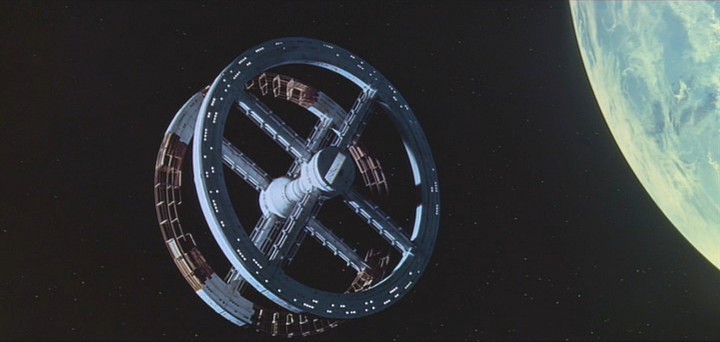
Though I admit to struggling with the film’s “message” on first viewing (hey c’mon, I was 12 fer chris’ sake!), it was the most mesmerizing cinematic experience of my life to that point. I went back 8 more times!

Soon after that, (about a year before I saw A Clockwork Orange), I was privileged to hear Arthur C. Clarke, upon whose 1948 short story, The Sentinel, the film and script were based, discuss the deeper message and meaning of the film. To paraphrase his explanation, the world of the late 20th Century sees itself as a highly advanced, wise, intelligent, very mature race (symbolized by the “old” David Bowman in the StarGate sequence), capable of mastery of their own planet and near space travel, ready to take on any challenge they set for themselves or presented to them.
As the film opens, a civilization of vast intelligence visits earth — over four million years ago. They “nurture” the emerging primate species at that time, which we see in the early scenes of the film when Moon Watcher and his tribe discover the Monolith and through it, “learn” to protect their precious small water supply from other tribes.
This intelligence later buries the Monolith on the moon, ostensibly to stand as “sentinel” to the achievement of a minimum degree of development by the emerging intelligent species on earth, the degree to which will be exhibited by the species ability to reach their own moon. When mankind finally makes it there, finds and unearths this waiting “monitor,” the resultant exposure to sunlight triggers its long-dormant beacon. When so activated, its long silent signal is sent back “home” through a local “transmitter” in near orbit around Jupiter, in essence informing its maker, “Hey, they’ve made it as far as their own moon.”

By comparison to the original intervening civilization, one that we are to assume has had time to become even wiser and benevolent, the emerging race here on earth is merely embryonic (symbolized by the “star child” Bowman at the end of the StarGate sequence). They see this level of scientific accomplishment, near space travel and being able to colonize ones own moon, as merely the infancy of an emerging race, a development that indicates the potential to become significant, nothing more. A development that likely should be monitored closely, perhaps even nourished and mentored. Deep and evocative material, by any standard. I was never the same after that lecture! ;-D
This milestone film has influenced more than just other film-makers; it has had remarkably far reaching sway. One of my favorite examples is the way it was interwoven into Roger Waters 1992 progressive rock Magnum Opus, Amused to Death. The cover of Amused To Death shows an ape intently watching television. In track 3, “Perfect Sense, Part I,” the Stanley Kubrick connection, through his film 2001: A Space Odyssey, will be obvious to most. From the massed ape vocalizations early on, to lyrics like “The monkey sat on a pile of stone… And he stared at the broken bone in his hand,” the symbolism and references seem clear enough. (See the image above) During the opening sequences of 2001, we see the “evolution” of apes, as they progress from passive and timid to aggressive and war-like as they learn how to “master” a tool, an animal bone used as a bludgeon. Here, the tool is television, but used, in Waters vision, in the same fashion.
Everything he did was unique; he never once repeated himself. And when looking at his work, you just let go of reality and are transported into the vision of his art. The controversy surrounding his hand at holding off the release of Fail-Safe in 1964 so that his own Dr. Strangelove or: How I Learned to Stop Worrying and Love the Bomb could hit the big screen first takes nothing from this MASTEPEICE of dark comedy. Peter Seller’s triple role as U.S. President Merkin Muffey, Group Captain Lionel Mandrake, and the bizarre Dr. Strangelove, George C. Scott’s General “Buck” Turgidson (who knew George could be funny?), Sterling Hayden’s Brigadier General Jack Ripper, Slim Picken’s Major “King” Kong, and the cameo appearance of a then 33-year-old James Earl Jones as Lieutenant Lothar Zogg, are simply unforgettable. This films ability to both make you laugh AND frighten has no equal in my opinion.
Just listing his work is a study in fine film making. Though he made less than a dozen films in his life (I don’t really count anything before 1955’s The Killing), they include some of the finest work ever put on celluloid. The Killing (1956), Paths of Glory (1957), Spartacus (1960), Lolita (1962), Dr. Strangelove (1962), 2001: A Space Odyssey (1968), A Clockwork Orange (1971), Barry Lyndon (1975), The Shining (1980), Full Metal Jacket (1987) and Eyes Wide Shut (1999)
He was a gifted, albeit highly idiosyncratic, director. Stanley Kubrick was purposely enigmatic with his work and has occasionally been referred to as an obsessive-compulsive auteur. Here is an insight into the man, gleaned from one of my favorite quotes from Stanley: “The most terrifying fact about the universe is not that it is hostile but that it is indifferent. If we can come to terms with this indifference and accept the challenges of life within the boundaries of death, our existence as a species can have genuine meaning and fulfillment. However vast the darkness, we must supply our own light.”
Next, I want to talk about Ridley Scott, who was also a photographer in his youth, and made thousands of commercials and music videos before turning to feature film work. Though his younger brother Tony (The Hunger (1983) , Top Gun (1986), Days of Thunder (1990) The Last Boy Scout (1991), Man on Fire (2004), The Taking of Pelham 1 2 3 (2009) is also a successful director, he is not quite the gifted visionary that Ridley has shown himself to be.
Listing Ridley’s most accomplished works will give you some indication of the power of his vision and the scope of his abilities to craft films. Starting with his first major film, 1977’s The Duellists, we are treated to one of the most beautifully crafted films I have ever seen and are given a spectacular view of the world at the time of Napoleon.

In 1982, he released Blade Runner, the science fiction, future noir masterpiece based on Phillip K. Dick’s “Do Androids Dream of Electric Sheep,” a film that is still considered one of the most influential and visionary sci-fi films of all time. Even though it was poorly received when released, it has been stolen from and imitated more times than I can count, and more than nearly any other film I can name. It is further cited as giving rise to the now popular dystopian universe vision in cinema. It is one of the finest examples of pure cinema I can name.
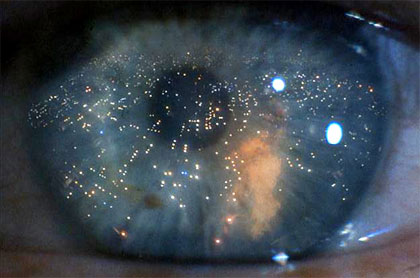
He followed with what could best be described as a Gothic horror film set in space, 1979s Alien. Seeing this film on the night of it’s national release on the big screen is still one of the most frightening experiences I’ve ever had in a theater. It is still as powerful (in a darkened room!) today as it was in its release in 1979.
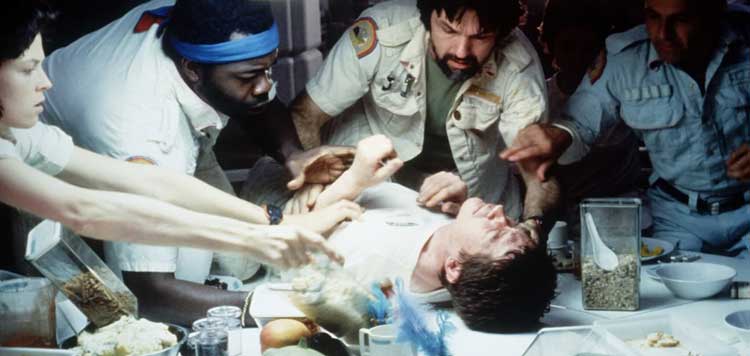
The list contains many other visually compelling works such as Legend (1985), Black Rain (1989/I), 1492: Conquest of Paradise (1992), White Squall (1996), Gladiator (2000), and Kingdom of Heaven (2005), all of which I feel MUST be seen. They are just so beautifully crafted that your eyes and mind will thank you for the experience.
And while he has had mixed success with other films, Thelma & Louise (1991), G.I. Jane (1997), Hannibal (2001), Black Hawk Down (2001), Matchstick Men (2003), A Good Year (2006), American Gangster (2007), and Body of Lies (2008), they all have a visual style and look that is unquestionably a cut above the common movie-going experience.
Have you seen James Cameron’s visual epic, Avatar? While there is nothing even remotely original here thematically (indigenous “savage” population against oppressive “advanced” invaders, the earth mother “Gaia” mythos, the loner finally fitting in…), it is simply the MOST original, imaginative, fantastic, REALISTIC animation ever put on screen. It is a thoroughly enjoyable, exhilarating, and BREATH-TAKING cinematic experience. Real 3-D is NOT to be underestimated; it affords an otherwise unobtainable sense of “you-are-there-ness.”
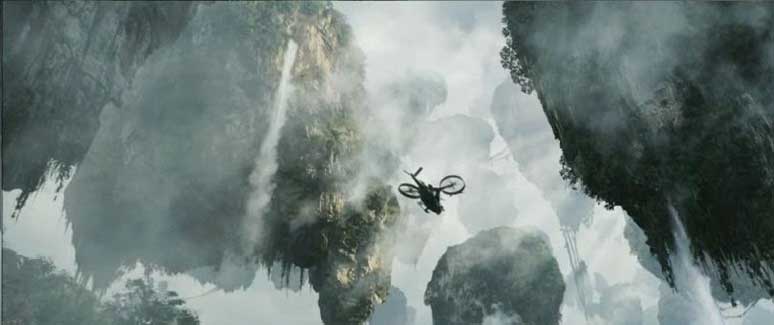
It is such a visceral experience (in Real 3-D) that it struggles to transcends the traditional “theater” experience and borders on a “travel” experience… It truly is that ground-breaking; you are taken for one of the most believable “rides” you’ve ever been afforded in a theater seat…
This film will change EVERY motion-capture animation film to follow. Cameron has truly hit this one out of the park, grossing over $242 million US in its opening weekend (18-20 December 2009). I left the theater feeling the same (possibly an even a greater) sense of awe that I experienced when seeing 2001: A Space Odyssey for the first time on the big screen at age 12 (1968) or Star Wars at 22 (1977). It is a visual extravaganza, truly a feast for the eyes and mind. I expected Avatar to sweep the Academy Awards in virtually every category except those that deal with traditional acting and screenwriting…including the top honor — Best Film.
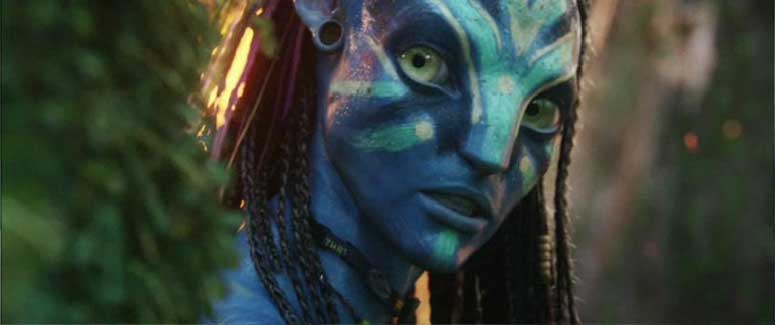
Alas, Cameron’s politics have left him “out of favor” with the Academy. And while ex-wife Kathryn Bigelow’s The Hurt Locker was an excellent film, with a breakout performance by Jeremy Renner, there is no doubt in my mind that the Academy awarded her both the Best Picture and Best Director Oscar to, well, make that point. Avatar was unquestionably the most spectacular accomplishment in filmmaking in 2009. Honestly, her 1995 future dystopian masterpiece, Strange Days, staring Ralph Fiennes, is a MUCH better film and is NOT TO BE MISSED… Put it on your short list if you haven’t seen it! ;-D
Television – the “Second Screen”
And, let’s not leave out the small screen. I have much to say on this topic. But for now, I’ll start with this.
I recently binge-watched the first three seasons of the BBC produced Sherlock series, staring Benedict Cumberbatch and Martin Freeman. Simply put, this is some of the finest television you are ever likely to see. The entire cast and crew’s clear love of, respect for, and desire to remain faithful to the original Sir Arthur Conan Doyle works is overwhelmingly apparent.
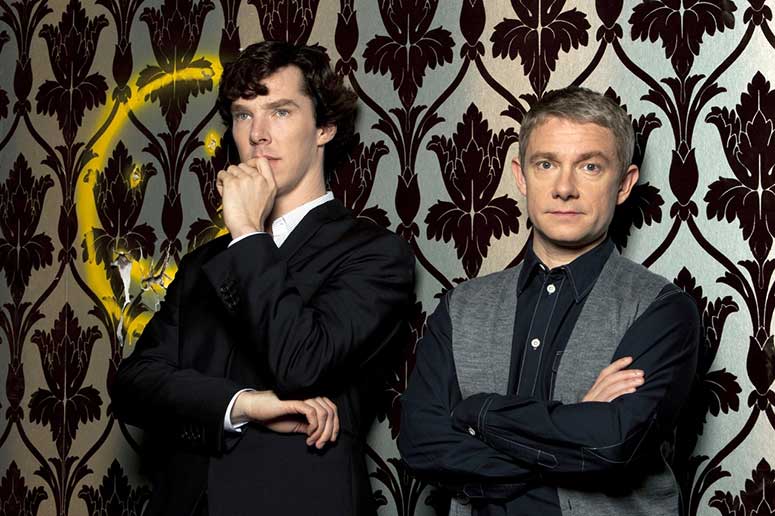
Benedict Cumberbatch and Martin Freeman, Sherlock Holmes
and John Watson on BBC’s wonderful “Sherlock”
First, by limiting the shows to only three 2-hour episodes (with commercials – about an hour and a half each when watched on NetFlix) every two years, they assured the integrity of the writing. There were 3 episodes each season, 2010, 2012, and 2014, with three more slated for 2016 at this point.
Further, the homage to the original Sir A.C.D. works is clear. The contemporization of the stories, with names like “A Study in Pink,” versus “A Study in Scarlett,” “A Scandal in Belgravia,” for “A Scandal in Bohemia,” “The Hounds of Baskerville,” in place of “The Hound of the Baskervilles,” and “The Sign of Three,” covering “The Sign of Four,” is more evidence of how earnestly this dedicated group takes their challenge.
As brilliantly accomplished as the writing of the episodes clearly is, the performances of Cumberbatch as Sherlock and Freeman as Watson, is simply something that must be seen to be comprehended. And while there can be no question that Cumberbatch gives us a REMARKABLE Holmes, it is the efforts of Freeman as Watson, actually the main character of this series, which propels the work to its uncanny heights.
I simply cannot recommend any other television series more highly. Equally, perhaps, but not more highly.
More to come…
Demo Only – Square

300 px x 300 px
Learn more Here…
Demo Only – Vertical

300 px x 600 px
Learn more Here…
Demo Only – Horizontal

300 px x 200 px
Learn more Here…
YouTube 4
Your ad could be here.
learn more here…
Link 4
YouTube 5
Your ad could be here.
learn more here…
Link 5
YouTube 6
Your ad could be here.
learn more here…
Link 6
YouTube 7
Your ad could be here.
learn more here…
Link 7
YouTube 8
Your ad could be here.
learn more here…













